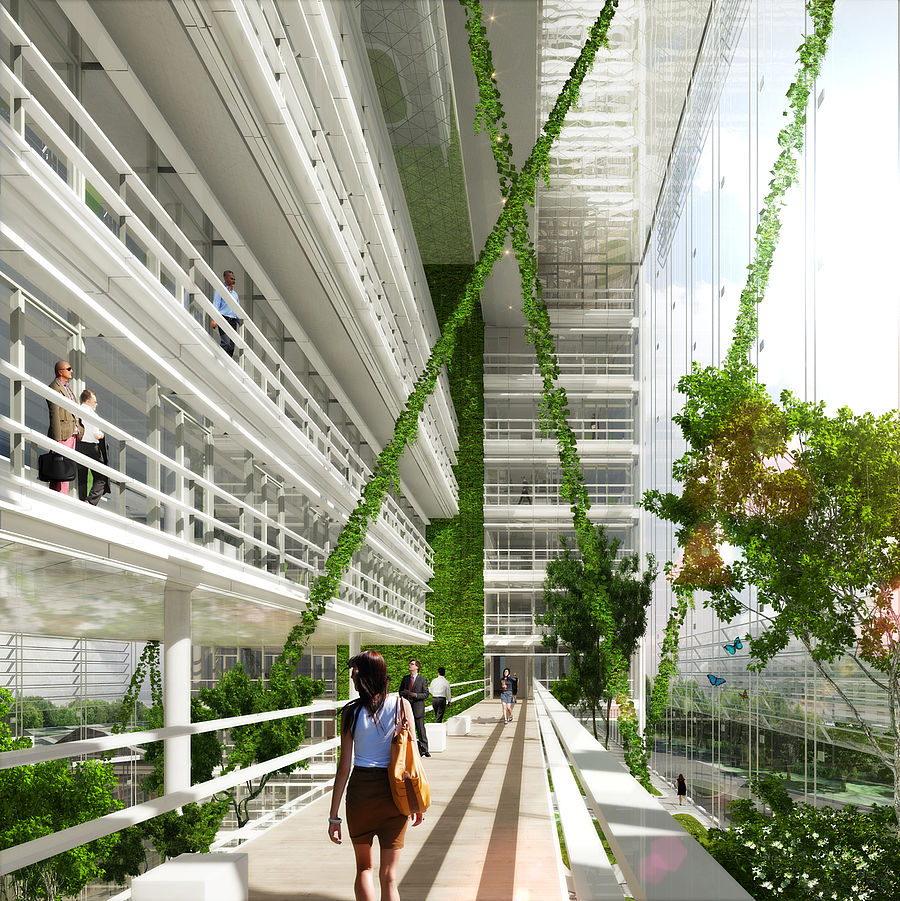07/21/2021
Sustainable architecture in times of climate change
Future-oriented building and climate-friendly architecture: What matters in times of climate change.
Are you feeling warm today too?
As an architecture firm, we've been thinking about the building challenges of the future in this hot weather. Extreme weather events such as heavy rain, heat and drought have long been felt around the world. What demands does climate change consequently place on architecture and urban planning?
The current climate debate is causing politicians, builders and architects to rethink their approaches. There is a rising understanding that resources are not infinite. This leads to a growing ecological awareness that stimulates interdisciplinary thinking and action in order to find new and optimal solutions for the sustainable and energy-efficient architecture of the future. Consequently, how can we create architecture that is good for people and the environment and does not require elaborate technology?
Learning from local and traditional architecture
The starting point for a new design is always the location. This is influenced by geographical and climatic conditions. Sustainable and energy-efficient architecture must therefore be oriented and adapted to the topographical, climatic and cultural conditions of its surroundings. From the collective regional knowledge, solutions can be found for the respective local conditions. This approach enables the construction of low-tech buildings with natural shading and ventilation that can adapt to the climate and respond to climate extremes.
Existing buildings and new buildings
Before new buildings are constructed, it should always be examined whether existing buildings can be further developed in a way that is open to the future through renovation and climatic adaptation. As an example, we can cite our project in Frankfurt am Main, in which we undertook the energetic refurbishment of a former men's dormitory into a modern residential complex with small apartments as a KfW Efficiency House 70. Municipally, these retrofits are often subsidized (e.g. funding opportunities offered by the city of Düsseldorf).
Individual and different adaptations in the existing building as well as in the new building can be for example the following:
- Façade greening to cool the façade and avoid heating, as well as retention areas and creation of a microclimate.
- Development of a holistic energy concept with renewable energies
- Low-tech instead of high-tech to create an energy-saving building
- Use of building materials and equipment that are harmless from a building biology point of view
- Minimal sealing of the site
- Building shading (greenery, solar sails) to generate cooling
- Planting „future-trees“ (source: city of Düsseldorf)
- Unsealing of open spaces
The sum of individual criterias, taken together, forms the matrix for sustainable, climate-friendly building development.
It is therefore crucial for our common future how we use buildings, convert them or construct new ones, and with what ambition we implement these tasks. Architecture has the power to respond to climate change by responding to people and the environment in its design. In doing so, it remains important to focus not on short-term goals, but on long-term sustainability.
